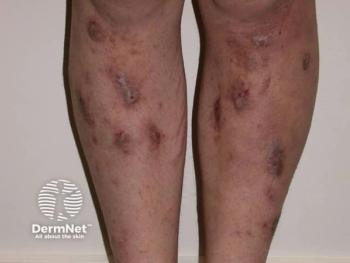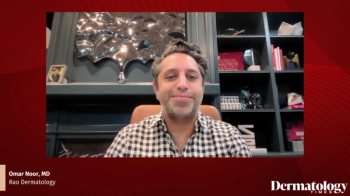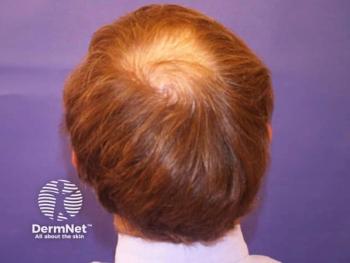
Cortisol testing demonstrates systemic safety, efficacy for AD
San Diego — The lipid enhanced, emollient cream formulation of hydrocortisone butyrate 0.1 percent (Locoid, Ferndale) effectively treats moderate to severe atopic dermatitis (AD) in children and does so with excellent systemic safety, at least when used over a period of up to four weeks, said Lawrence F. Eichenfield, M.D., at the Pediatric Dermatology for the Practitioner Meeting here.
Dr. Eichenfield, who is chief, pediatric and adolescent dermatology, Children's Hospital and Health Center, San Diego, and professor of pediatrics and dermatology, University of California, San Diego, reported the results of an open-label, multicenter trial in which 20 patients who were 5 to 12 years old and judged to have moderate or worse AD using the seven point Physician's Global Assessment (0 = clear, 6 = extreme) were treated three times daily with hydrocortisone butyrate 0.1 percent cream for three to four weeks. The primary objective of the study was to evaluate the potential for adrenocortical suppression, and fasting serum cortisol levels were measured at baseline and study completion both in the early morning and 30 minutes after a cosyntropin (Cortrosyn, Organon) stimulation test (CST).
No evidence Those measurements showed no evidence of hypothalamic-pituitary-adrenal axis suppression in any of the 20 subjects. In addition, there were no adverse changes in other laboratory tests used for safety monitoring while the lipid-rich moisturizing cream appeared helpful in restoring the skin barrier and was associated with rapid and marked improvements in the signs and symptoms of AD.
The study enrolled 21 children, but one subject was lost to follow-up after the baseline visit. The remaining 20 children had a mean age of 9 years and were equally represented by males and females. At baseline, nine (45 percent) children were rated as having moderate AD, nine (45 percent) were considered to have marked disease and two (10 percent) had severe AD according to the Physician's Global Assessment. Mean AD body surface area (BSA) of involvement was 50 percent (range, 25 percent to 80 percent)
"This protocol was designed to optimize the potential for systemic drug absorption by treating children having inflammatory disease associated with significant impairment of the cutaneous barrier and in particular, those needing application to large body surface areas," Dr. Eichenfield notes.
The CST test was repeated after three weeks in two children who had achieved total AD clearing at that time and after four weeks in the remaining 18 children who continued applying the corticosteroid for the duration of the study. Mean fasting serum cortisol levels at baseline were 15.8 microg/dL in the morning prior to the CST and 28.3 microg/dL measured 30 minutes post-stimulation. At the end of treatment, mean serum cortisol concentrations were 13.0 microg/dL prior to stimulation and 27.8 microg/dL post-stimulation. No child had an abnormal morning cortisol level (</=5 microg/dL) and all showed an appropriate rise in cortisol in response to stimulation testing (>18 microg/dL).
Efficacy impressive AD responses were evaluated at weekly follow-up visits, and results for all endpoints indicated the lipid enhanced, emollient cream formulation of hydrocortisone butyrate provided rapid and dramatic improvement. Clear or almost clear status in the Physician's Global Assessment was achieved by almost half of the children within two weeks, by nearly 70 percent after three weeks and by 80 percent at study conclusion. Mean percent BSA of involvement fell from 50 percent at baseline to 13 percent at the end of treatment.
Newsletter
Like what you’re reading? Subscribe to Dermatology Times for weekly updates on therapies, innovations, and real-world practice tips.


















